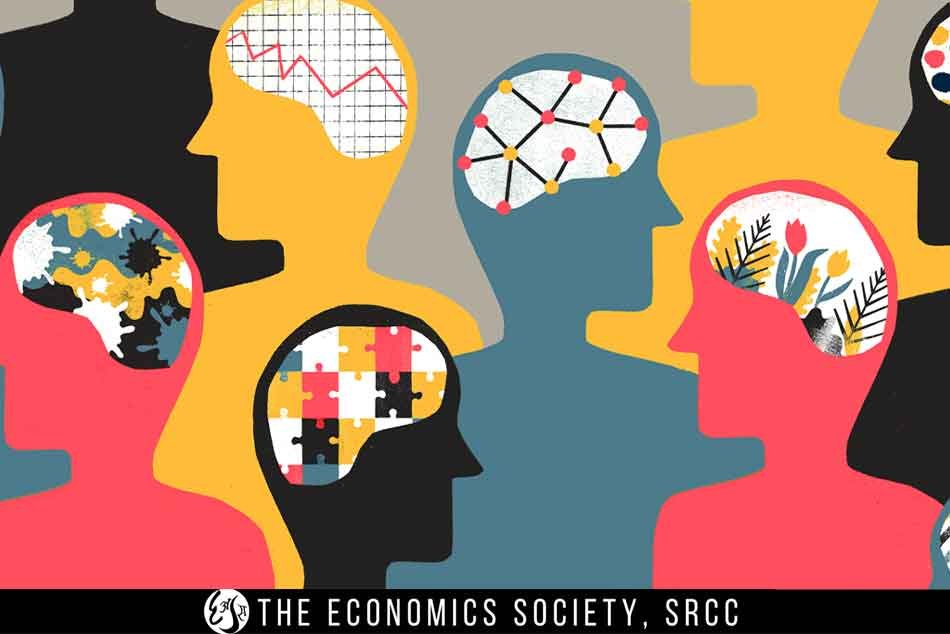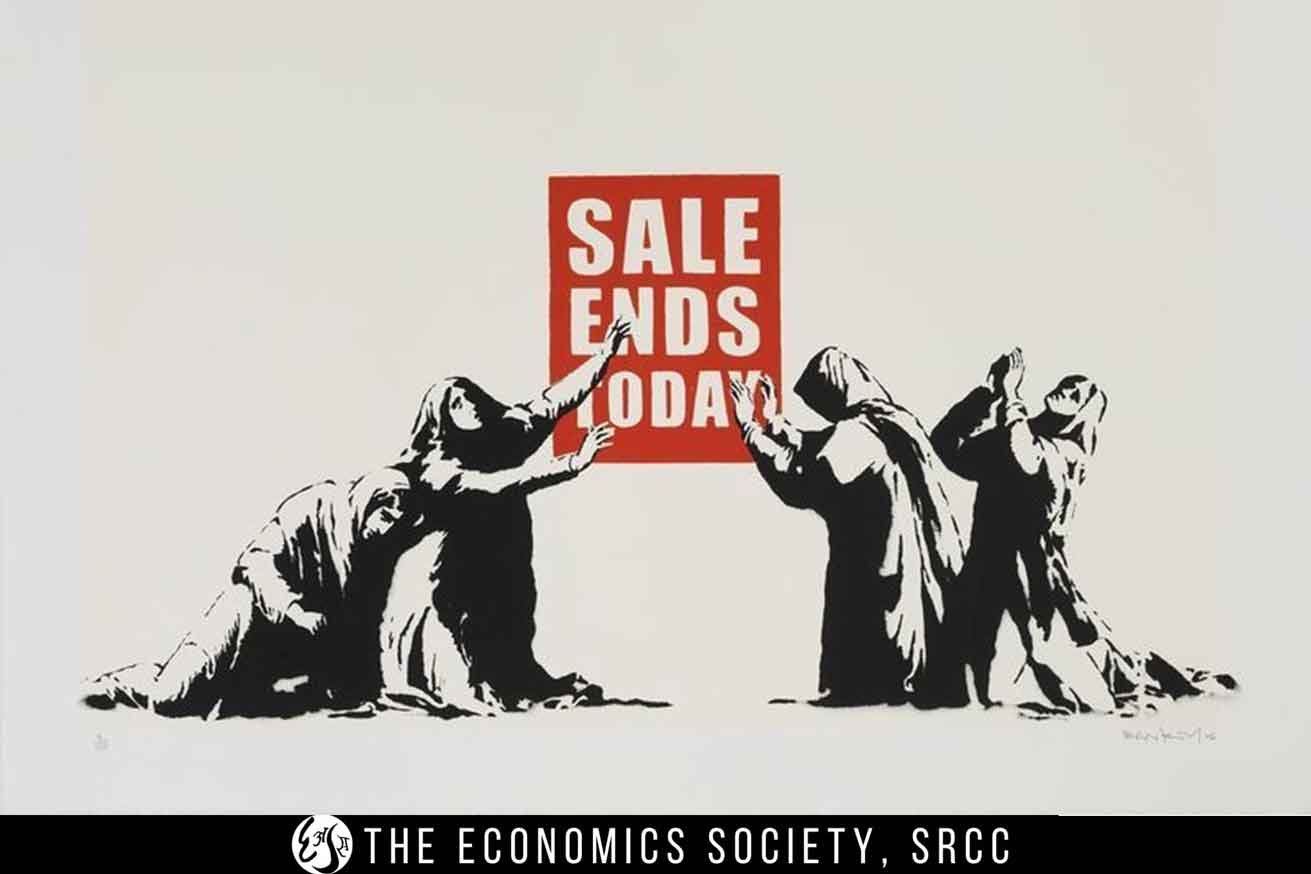Naked Economics — Undressing the Dismal Science is an insightful book by Charles Wheelan that even a layman can undoubtedly comprehend. Being someone who enjoys books on mythological beings and distant lands of wizards and elves I was quite sceptical of picking up this book, to begin with. The book, however, has been thoroughly entertaining (yes I was equally surprised) and thought-provoking. The striking feature of this book is its uncharacteristic simplicity and the absolute rejection of complicated graphs depicting infinite market situations. The book covers a wide array of topics from the seemingly mundane topic of maximizing utility to various political, economic and social landscapes.
Chapters on Economics of Information, Human Capital and Financial Markets are mentally stimulating. The book ends with chapters encapsulating Trade and Globalization and Development Economics. The book constantly confronts conventional wisdom. Unconventional ideas like what economic benefits smokers provide to non-smokers, Asian Sweatshops not being as diabolical as they are publicized and good economics not necessarily being good politics have been discussed in the book. Simple logic which may at times infuriate but more often than not, entertain and provoke you is the most conspicuous feature of this book. The book explains economic nomenclature in an approach that requires no precursory knowledge of the subject.
SUMMARY:
A fascinating oxymoron, Charles elucidates, is that of Creative Destruction. Creative Destruction is quite simply the destruction of something to pave way for something else that is technologically more advanced or/and can solve a bigger problem than its incompetent predecessor. Bailing out firms or imposing trade barriers can stagnate the natural flow of Creative Destruction that is indispensable in today’s dynamic market. It is the natural phenomenon by which economies adapt, evolve and grow, inhibition of which will lead to inefficiency and economic decline. Charles Wheelan is brutally forthright when it comes to governments. “Some government involvement in the economy is purely destructive” Regulation can disturb the movement of capital and labour, raise the cost of goods and services, inhibit innovation and otherwise shackle the economy. This can all result from regulations with good intentions. At worst, regulation can become a powerful tool for self-interest as firms work the political system to their own benefit. Economics of information is by far the most interesting chapter in the book; it explains behavioural economics and simultaneously explains the significance of information in today’s economy. The statistical discrimination has been explained citing various examples which are so inconspicuous but interesting nonetheless.
This chapter also dismantles a major part of McDonald’s business model. Why is it that McDonald’s doesn’t keep innovating their burgers, surely they can, but they don’t. The answer lies in human behaviour. We may concur that change is the solution, but deep within we feel more secure by implementing the converse. This is why predictability becomes a major asset to McDonald’s. A person in an alien destination can be unambiguous that a McDonald’s burger will taste the same as it does back home. Human Capital is an intriguing term that examines intangible assets that is probably the most important to an economy. It gives answers to why Bill Gates will still earn more than an average high school dropout regardless of Microsoft.
An important concept highlighted in this chapter is that human capital is like any other good. The price of a certain skill bears no inherent relation to its social value, only its scarcity. The byproduct of human capital is productivity, the more productive we are in the 24 hours the more we will progress. It also discusses the common misconception that every new job must come at the expense of another. Creating new jobs increases the size of the economic pie it doesn’t make the slices smaller. Economics is about incentives and getting rich is the best one out there. This idea is central to this chapter and has been explained through various examples using historical data. The chapter on financial markets explains why some people pay a higher rate of interest than others. It is fundamentally about risk. Those with a larger appetite are in for higher rewards (and losses).
He explains that the only reason people are willing to provide a return on investments is because capital is scarce. The chapter on Federal Reserve throws light on how the Federal Reserve is instrumental to economic growth. An “easy money” policy at the Fed can cause consumers to demand more than the economy can produce. The only way to ration that excess demand is with higher prices. The result is inflation. However, inflation isn’t always a bad thing. If you have to pay back loans, with higher rates of inflation the real purchasing power your return is much lesser than what you had originally received. He uses a very interesting analogy to describe what the Federal Reserve is charged with doing. Let’s assume the economy is a car and the Federal Reserve is the driver. The Fed has to determine the speed that is neither too fast nor too slow. • We don’t know the exact speed limit of the economy • Both the accelerator and the brake work with a lag • Monetary and Fiscal Policy affect the economy independently.
Thus the Federal Reserve may be gently applying the brake while the Congress maybe jumping up and down on the accelerator • The obstacle course of world events (financial crisis, spike in prices of commodities) Thus it showcases the extreme nature of work of the Federal Reserve and how it is extremely easy to criticize it for its shortcomings but when in reality it deals with more variables that are unknown than known. Trade and globalization invariably make everyone better off. Without globalization, we would all be trying to produce goods and services that others are more adept at doing. Productivity is what makes us rich. Specialization is what makes us productive. Trade allows us to specialize. Thus we can safely assume that Globalization is essential to ensure efficiency and improve competition to make everyone better off. It also introduces another idea; he writes that Asian sweatshops are a good thing because they pump money into a local economy, because the jobs are better than what’s available locally and because they provide skills and training which have spin-offs that ripple wider through society.
He cheerfully admits that the workers are exploited compared to workers in Western societies, but that the alternative — by which he means no jobs at all — ultimately keeps people poorer. Economics is not a zero-sum game is the central idea behind this chapter. It is not essential for someone to be poor for the other to be rich. So finally to answer the question that probably made you go through the article. Why did the chicken cross the road? The answer comes from the first chapter itself. People do things out of self-interest. In short, crossing the road gave the chicken a higher utility. This book is gripping and informative but most importantly it’s not insipid (words I never thought I would use for a book about economics).Despite the ideological position that the author adopts, this is still a book worth reading. You need not swallow the free market view of the world to gain some insight into the kinds of questions that economics attempts to handle. If nothing else, it serves as a reminder that economics is all around us and that economic questions cannot be wished away, no matter how fervently we want them to be. You will invariably find yourself smile as you progress and marvel at the simplicity of the explanations of complex economic situations.
By Atharv Saxena.




